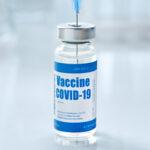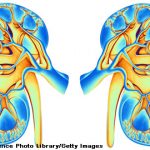Neurosarcoidosis & sarcoid dermatopathology are discussed.


Lara C. Pullen, PhD, is a medical writer with a PhD in microbiology/immunology from Northwestern University’s Feinberg School of Medicine. As a medical writer she has covered topics as diverse as diabetes, cardiovascular disease, and autism. Her favorite subject, however, is the role of the immune system in health and disease. Dr. Pullen is also the mother of three children, the youngest of whom has Prader-Willi Syndrome (PWS). She is an active member of the PWS community and a thought leader on the importance of the ketogenic diet for this patient population.

Neurosarcoidosis & sarcoid dermatopathology are discussed.

Predicting a patient’s disease course is difficult, especially in SLE. A recent study examined the link between a patient’s 2019 EULAR/ACR SLE Classification Criteria score at diagnosis to subsequent disease severity, finding a score of 20 or more may predict a more severe disease course.

Albayda et al. describes a North American cohort of patients with dermatomyositis, reporting that small ubiquitin-like modifier activating enzyme (SAE) autoantibodies are clearly associated with this clinical disease. Patients with this clinical phenotype most commonly present with a rash first, followed by muscle involvement.

Recent research indicates tumor necrosis factor inhibitors may slow disease progression in the spine of patients with axial spondyloarthritis.

Additional training may be needed on the appearance of the maturing sacroiliac (SI) joint on MRI. In a recent study, researchers found local radiologists may mistake normal physiologic changes of a maturing SI joint as sacroiliitis in pediatric patients.

Furuta et al. evaluated the benefits of reducing glucocorticoid doses during remission induction for patients with ANCA-associated vasculitis. The researchers found a reduced-dose-glucocorticoid-plus-rituximab regimen was noninferior to a regimen of high-dose glucocorticoids plus rituximab in these patients.

Mounting evidence indicates that exposure to inorganic dust is a risk factor for the development of autoimmune diseases. According to a recent study, dust exposure during military service in dusty environments represents an occupational and environmental risk and was associated with a 10% increased risk of developing RA.

Treatment with tocilizimab preserved lung function in patients with systemic sclerosis (SSc) and interstitial lung disease (ILD) regardless of a patient’s level of lung involvement, according to a recent study.

Research indicates mRNA vaccination for SARS‐CoV‐2 infection may induce a T cell response in vulnerable, immunocompromised patient populations being treated with rituximab.

Research has shown voclosporin in combination with MMF and low-dose steroids benefits patients with lupus nephritis, significantly increasing the speed of remission. New data from an ongoing extension study demonstrate a positive risk/benefit profile.